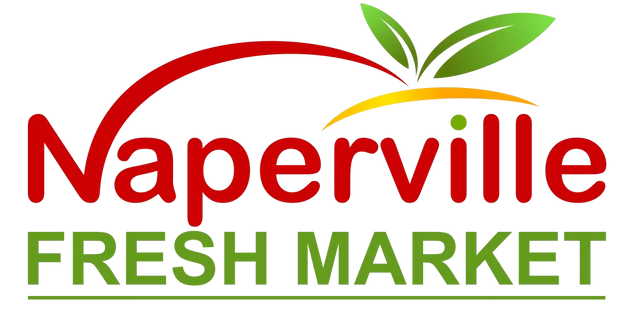Welcome to Your Halal Meat Guide in Naperville
Finding high-quality halal meat in Naperville, Illinois can feel easier when you know exactly what to look for and how to shop confidently. This guide walks you through the essentials of halal principles, everyday shopping strategies, handling and cooking tips, and local-focused advice tailored to Naperville residents and visitors. Whether you are preparing a weeknight dinner or planning a celebratory feast, you will discover practical steps that help you evaluate quality, ensure religious compliance, and enjoy flavorful meals at home. To make planning simpler, remember to scan local weekly deals early so you can build your shopping list around timely options while staying true to your culinary goals.
At its core, halal meat is about more than a label. It reflects a set of ethical, spiritual, and quality-focused practices that begin with how animals are raised and treated and continue through slaughter, processing, and final handling. As a shopper, you benefit from learning to evaluate both the spiritual and practical aspects—certification marks and clean handling on one hand, and color, texture, and aroma on the other—so that every purchase aligns with your values and results in a delicious meal.
Understanding the Meaning of Halal
Halal is rooted in a framework that emphasizes respect for animals, mindful slaughter, and the avoidance of prohibited substances. In the context of meat, this includes ensuring the animal is healthy at the time of slaughter, the name of God is invoked, blood is properly drained, and the process is handled by trained individuals using appropriate methods. For consumers, the outcome is a product that meets religious requirements and aligns with high standards of hygiene and food safety.
You may see different terms associated with halal meat. Dhabihah refers to the slaughter method, while tayyib speaks to wholesomeness and purity, capturing the idea of overall quality and integrity throughout the supply chain. When you bring these concepts together during your shopping routine, you set a high bar for both faith and flavor.
Halal Certification and What to Look For
Certification is a key tool for consumers. Legitimate halal certifiers audit slaughterhouses, processors, and sometimes retail environments to verify that halal procedures are implemented and maintained. When you examine packages, look for clear halal certification logos, batch or lot numbers when available, and readable labels that state the species and cut. If you are purchasing from a butcher counter, ask staff about their suppliers, how they prevent cross-contamination, and any documentation they can provide regarding certification and handling.
In Naperville, many shoppers value consistency. If you find a retailer that can explain sourcing, traceability, and sanitation practices, add them to your regular rotation. When you build relationships with a trusted butcher, you gain access to reliable answers about how and when the meat was processed, what day new inventory arrives, and which cuts are best for your recipes.
Judging Freshness and Quality
Even within halal guidelines, quality can vary. Pay attention to appearance: beef should be a vibrant red with minimal discoloration, lamb should present a rich pink to red tone, and poultry should be light and uniform without a gray tinge. Texture matters too; fresh meat typically feels firm yet springy, and it should not be slimy. Aroma is just as important—freshness has a clean scent; any sour or off odor is a sign to pick something else. If purchasing prepackaged meat, examine the packaging for an intact seal, no excess purge, and clear labels that include safe handling instructions.
For shoppers who plan meals for several days, consider buying whole cuts that you can portion at home. This gives you control over trimming, ensures minimal exposure to surfaces, and often delivers better consistency across multiple meals. Ask your butcher for guidance on how to portion and store different cuts, especially if you are exploring new recipes or cooking methods.
Popular Halal Cuts and Cooking Approaches
For beef, consider chuck for slow braises, sirloin for quick pan searing, and rib cuts for grilling. Lamb shoulder benefits from low-and-slow roasting, while leg can be roasted for special gatherings or sliced thin for quick sautés. Goat shines in stews and curries where connective tissues melt into tenderness, and poultry remains versatile across roasting, grilling, and simmering applications. Match your cut to your cooking method: quick heat for tender portions and gentle, extended cooking for tougher cuts that reward patience with depth of flavor.
Marinades add character and tenderness. Use aromatics like garlic, ginger, and fresh herbs, and balance acid and fat to enhance texture. For spice blends, layer cumin, coriander, paprika, and warm spices like cinnamon or allspice according to the dish. Always bring meat to just below room temperature before cooking to promote even results, and rest cooked meat briefly so juices redistribute.
Smart Shopping Strategy for Naperville
Plan your route with freshness and convenience in mind. Ask when deliveries arrive, and shop soon after to access the best selection. Inquire about custom cuts if you have a specific recipe, and request trimming that suits your needs to reduce waste at home. If you are new to a store, start with a small selection and cook promptly, then evaluate tenderness, flavor, and consistency before committing to a larger routine. As you become familiar with a reliable source, you will learn which days yield the widest variety of cuts and how to time your visits around your weekly cooking schedule.
Meal planning also matters. Build a flexible plan with two or three core proteins, and cook once to eat twice—repurpose a slow-cooked lamb shoulder into wraps or rice bowls, and turn roast chicken leftovers into soups or salads. Midweek batch cooking frees up time without sacrificing flavor. To keep planning easy, it helps to check local weekly deals when mapping out which cuts to feature in your upcoming recipes.
Safe Storage and Handling at Home
Quality is protected by careful storage. Refrigerate meat promptly after purchase and keep it in its original packaging until you are ready to portion. If freezing, wrap tightly to minimize air exposure. Label by cut and date so you can use the oldest packages first. Thaw in the refrigerator rather than on the counter, and keep raw meat on the lowest shelf to prevent drips. Clean cutting boards and knives thoroughly between tasks, and reserve a dedicated board for raw proteins to avoid cross-contact with produce.
When cooking, use a thermometer to confirm doneness for poultry and ground meats, and rely on a combination of time, temperature, and visual cues for whole-muscle cuts. Resting meat after cooking enhances tenderness and moisture retention. Leftovers should be cooled quickly and stored in shallow containers.
Community, Culture, and Seasonal Inspiration
Halal cooking in Naperville thrives on community. Share recipes and techniques with friends and family, and explore seasonal produce from nearby farms to complement your meals. When the weather warms up, experiment with grilled kebabs and herb-forward marinades. During cooler months, lean into braises, tagines, and soups that transform tougher cuts into comfort food staples. Explore regional variations within halal cuisine—from South Asian spice profiles to Middle Eastern herb mixes—to expand your culinary repertoire while staying true to halal principles.
FAQ
Q: How can I tell if meat is truly halal? A: Look for recognized certification on labels, ask your butcher about sourcing and slaughter practices, and verify that cross-contamination is prevented in the display case and prep areas.
Q: What is the best way to store halal meat for the week? A: Portion cuts into meal-sized packages, refrigerate what you will use within a couple of days, and freeze the rest with airtight wrapping to preserve freshness.
Q: Are there differences in flavor between halal and non-halal meat? A: Flavor is influenced by breed, feed, handling, and freshness. Halal processing prioritizes cleanliness and thorough draining, which can contribute to a clean taste when quality is maintained across the supply chain.
Q: Can I ask for custom cuts at the butcher counter? A: Yes. Many butchers accommodate requests for specific thickness, trimming, or portion sizes. Clear communication helps you receive exactly what you need for your recipe.
Q: What cooking methods are most forgiving for beginners? A: Slow braising for beef chuck or lamb shoulder and roasting bone-in poultry are forgiving techniques that produce tender, flavorful results with minimal risk.
Q: How do I prevent cross-contact in my kitchen? A: Use separate cutting boards for proteins and produce, clean tools between tasks, and store raw meat below ready-to-eat foods in the refrigerator.
Q: What should I do if a package’s seal is broken? A: Choose another package. An intact seal helps ensure freshness and hygiene during transport and storage.
Ready for Your Next Halal Shopping Trip
Confident halal shopping in Naperville comes from combining knowledge with routine: understand certification, inspect freshness, plan meals, and build relationships with butchers who value transparency and care. As you explore new cuts and recipes, keep notes on what your family enjoys so future trips are even smoother. When you are ready to plan your next cart, scan the latest weekly deals, assemble a thoughtful list, and enjoy the satisfaction of cooking flavorful, wholesome halal meals at home.




